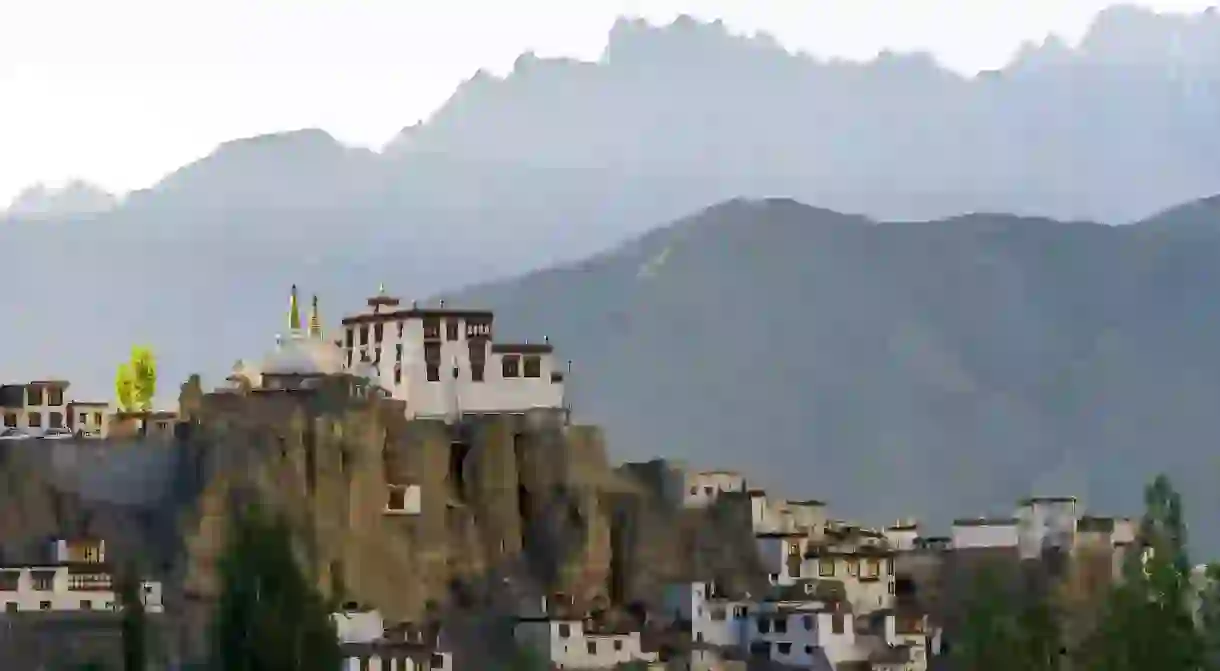The Most Famous Buddhist Monasteries You Should Visit in India

Buddhism – founded by the Buddha, Prince Siddhartha Gautama – can be traced back to India in the late sixth century BC. Fast-forward to the mid-20th century, when Tibetan Buddhist leader the Dalai Lama fled his Chinese-occupied homeland along with several thousand followers and settled in India, further strengthening this movement in this South Asian country. Scattered across India, the historical and spiritual monasteries are a reflection of this presence; here are some of the most awe-inspiring.
Rumtek Monastery
Monastery

At 1,500 metres (4,921 feet) above sea level, Rumtek Monastery overlooks Gangtok city. Built in the ninth century and rebuilt in the 20th, it is the largest monastery in Sikkim and is shrouded in the controversy of the Karmapa (an ancient Tibetan lineage claimed since the 1980s by two men), which means there is always a high-security presence here. The monastery’s main attraction is a huge prayer hall that features stunning murals, thangkas (Buddhist paintings on cotton and silk appliqué) and statues. If you happen to be Buddhist and are visiting during Tibetan New Year, you can also witness the masked dance festival held here. Best times to visit: March to May and October to December.
Lamayuru Monastery
Monastery, Ruins

Lamayuru Monastery is a secluded site on the Srinagar-Leh Highway that stands at an elevation of 3,510 metres (11,516 feet). While the complex lies in ruins, the prayer hall is unscathed. There are caves, three stupas and the main temple. The main attraction is the Yuru Kabgyat – a two-day cultural festival, held in the second month of the Tibetan lunar calendar, that features a masked dance by the lamas. Best time to visit: May to September.
Phugtal Monastery
Bridge, Library, Monastery

Phugtal Monastery means ‘through cave’; during monsoon season, water gushes down from the cave mouth, making it a sight to behold. To reach this monastery in the Zanskar region, pass through a suspension bridge and walk to the huts. There are numerous prayer rooms and a library with frescoes on the ceilings that depict Buddhist culture and art. Best time to visit: July to September.
Thikse Monastery
Monastery, Shop

Perched atop a hill at an elevation of 3,600 metres (11,811 feet), Thikse Monastery is the largest monastery in Ladakh. The 12-storey structure houses cultural artefacts of Buddhism, such as thangkas, swords, murals, statues and chortens. The complex houses 10 temples, a café, an assembly hall and a souvenir shop, but its most outstanding feature is the Maitreya Temple, which has an enormous statue of the Maitreya Buddha. Best time to visit: May to September; routes are closed in winter due to heavy snow.
Tabo Monastery
Buddhist Temple, Monastery

Constructed in AD 996 (but restored in the 20th century following an earthquake in 1975), Tabo Monastery in Spiti Valley is one of the oldest monasteries in the country. Inside the complex are nine temples, four stupas dating back to the 13th, 14th and 15th centuries, a monks’ chamber, a nuns’ residence and 23 chortens. The main attractions are the Chamber of Picture Treasures, the Temple of the Enlightened Gods and the meditation caves carved out of the mountains. These caves are said to be the home of the monks during winters when the temperature plummets drastically. For visitors, there is a place to stay near the monastery. Best time to visit: May to September.
Hemis Monastery
Monastery

Dating back to the 11th century, Hemis Monastery is known for its architecture, spiritual retreats with lamas and the Hemis Festival that takes place in June and July and involves ancient rituals and a masked dance. Beautiful scenery encircles the monastery, and the vast collection of ancient relics, thangkas and statues lends an air of tranquillity. Best time to visit: April to June.
Namdroling Monastery
Monastery

If you’re down south, make sure to pay reverence at Namdroling Monastery. Its main features include an 18-metre-tall (59-foot-tall) gold statue of Buddha inside the Golden Temple and gold paintings and ancient relics that depict Tibetan gods and demons. This monastery is home to 5,000 nuns and monks, making it one of the largest Tibetan settlements in the country. Best time to visit: November to February.
Tsuglagkhang Complex
Monastery

An immensely spiritual place, the Tsuglagkhang Complex is where the Dalai Lama resides. Established in the 16th century, this monastery houses an enormous statue of Lord Buddha, the Tsuglagkhang Temple, in which you can walk along the Buddhist prayer wheels (spinning them is said to bring good karma), and the Tibet Museum that features thangkas, sacred paintings, ancient relics and handicrafts that showcase Tibetan culture and art. A bookstore and café also lie within the complex. Best time to visit: October to March.
Diskit Monastery
Monastery

Diskit Monastery was established in the 14th century and is known for its 32-metre-tall (105-foot-tall) Jampa (Maitreya) Buddha statue. Inside the prayer hall, you’ll find huge drums, sculptures of guarding deities and paintings, including a fresco of Tibet’s Tashilhunpo Gompa. Enjoy views of the Nubra Valley from atop the monastery. Best time to visit: July to September.
Additional reporting by Josephine Platt.













